 Contact us
Contact us Pardot Einstein
Pardot Einstein
Pardot Einstein is a set of AI-powered features that help you analyze data from Pardot and Salesforce to find patterns and show insights on your best-performing campaigns. The suite includes four main features: Einstein Behavior Scoring, Einstein Lead Scoring, Einstein Campaign Insights, and Einstein Attribution. Let’s have a closer look at each of them.
Einstein Behavior Scoring
Einstein Behavior Scoring analyzes each Prospect’s behavior and their Engagement History and identifies whether their activities suggest that they are ready to buy. It then assigns a score of 0 to 100 to those prospects based on their engagement patterns in the past 365 days. Einstein considers variables such as behavioral signals and the frequency of interaction when calculating a prospect’s score. Your prospects are then ranked against each other, and Einstein Behavior Scoring highlights positive and negative insights. High email open rates and form submissions are examples of positive insights for a lead. A low click-through rate or no recent activity on the same lead will be considered a negative insight. Recent behaviors usually get a higher score than older ones, and a behavior score can change over time.
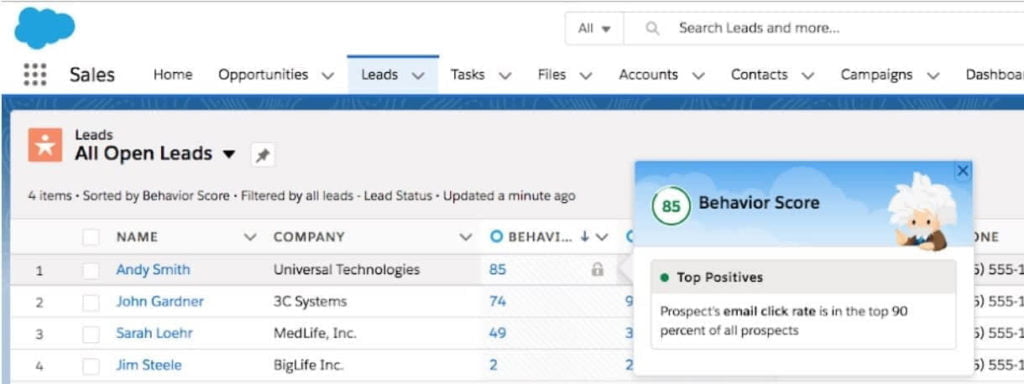
Einstein Lead Scoring
While Einstein Behavior Scoring indicates how interested a lead or contact is in your company, Einstein Lead Scoring indicates how interested your company should be in a lead. Einstein Lead Scoring analyzes lead conversion patterns and helps your sales reps prioritize their efforts.
To find trends in your successful lead conversion history, Einstein Lead Scoring examines your company’s leads and their field data, including any custom fields. After that, leads that are determined to fit your patterns best, receive a score based on the likelihood they will convert. Lead Score further indicates which of the lead’s fields affect the score the most.
Einstein Campaign Insights
Einstein Campaign Insights analyzes prospect engagement activities, content, and audience characteristics using Einstein machine learning to provide real-time insights into the running campaigns.
Campaign Insights examines how your prospects interact with your marketing assets and uncover common themes, as well as key prospects’ attributes such as job title, location, and industry. Each insight comes with a label and supporting rationales (aka possible explanations) that showcases prospect interaction data in comparison to a baseline. The rationales may be engagement-specific or a mix of how different audiences engage with different assets or asset types. For example, insights could reveal which personas or geographic regions are the most active, allowing marketers to fine-tune their strategies over time by targeting those prospects or organizing events in those regions.
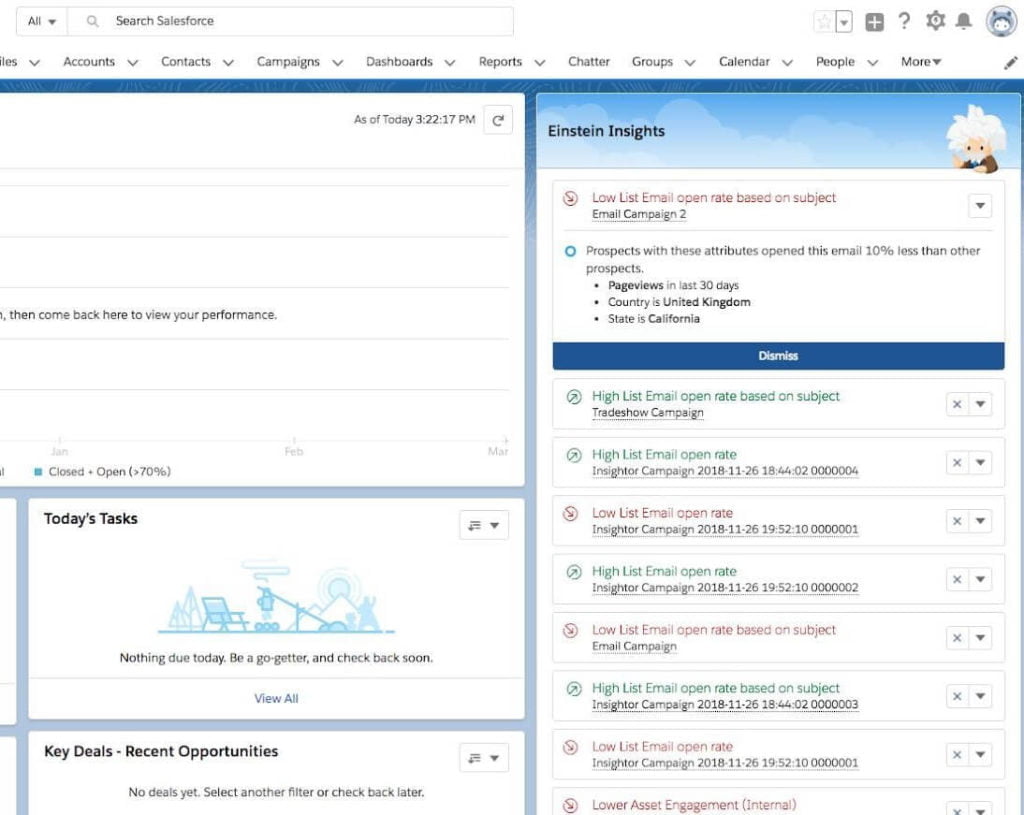
Einstein Attribution
Einstein Attribution is a feature that combines Campaign Influence with Einstein’s AI-powered analysis to solve the gaps left in campaign attribution and make a more accurate evaluation. You can use Einstein Attribution to study past campaigns and identify new patterns instead of selecting a model before you start reporting. Einstein assigns conversion credit across the available marketing touchpoints, allowing you to see which campaigns are the most successful at generating pipelines. Touchpoints include tracked engagement activities (email click, form submission, event attendance, etc.) on a Pardot prospect or a Sales Cloud campaign member. From there, Einstein Attribution generates new reports across all channels and campaigns. Powered by machine learning it then demonstrates how different combinations of campaigns delivered across various channels can result in different sales outcomes.
Attribution values appear in the same places where you’d expect to see them in Campaign Influence: related lists on campaigns and opportunities, dashboards, and reports, including B2B Marketing Analytics app and Multi-Touch Attribution dashboard.
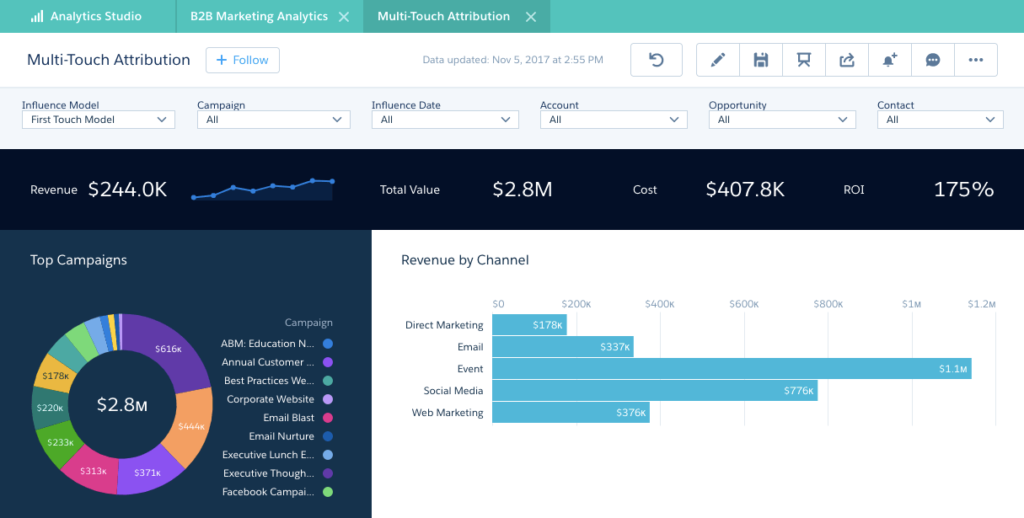
Optimize Send Times with Einstein
The Einstein Send Time Optimization (STO) feature defines the best time to send a message. Einstein uses machine learning to determine the best times to send messages so that they are more likely to be opened.
Marketers can use Einstein Send Time Optimization to boost email and push notification engagement. Einstein calculates the best time to send a message to each contact using automated analysis. The suggestion is saved as a scheduled send time and the prospect is added to a sending queue. Each week, Einstein evaluates prospects’ engagement data (sends, opens, clicks, unsubscribes, spam complaints) and recreates its sending model with the data from each contact’s engagement data for sends with the Commercial send classification. When Einstein is unable to construct a model for contact due to a lack of data (prospect is new or hasn’t engaged with you recently), the contact receives messages based on a generalized model. Data sent in your Enterprise is used to build the generalized model. The Einstein Send Time Optimization dashboard shows analytics that forecasts message engagement in the future.
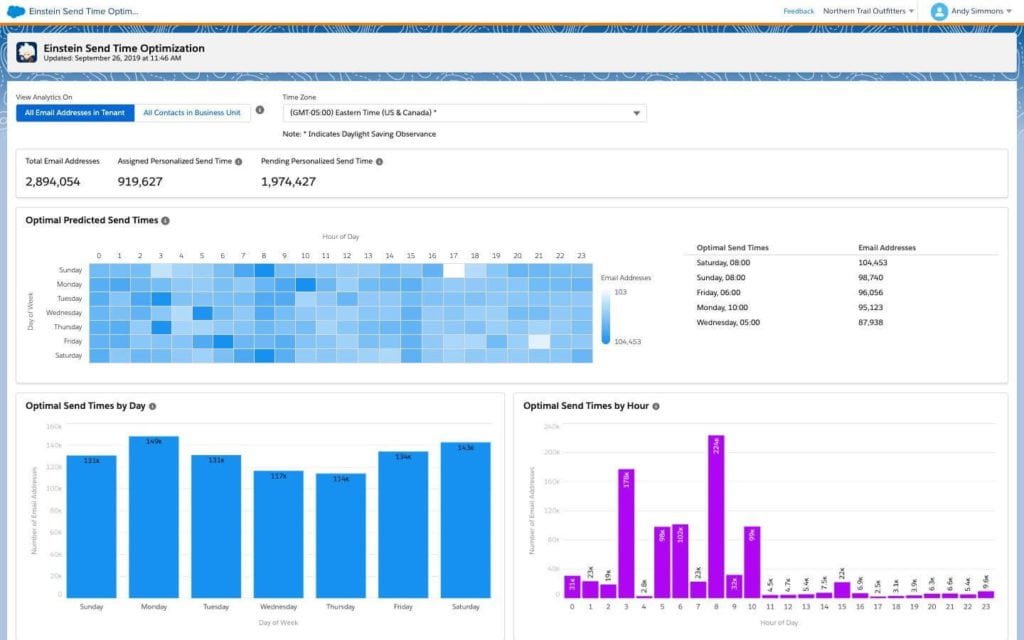
Einstein Key Accounts Identification (Beta)
Einstein’s AI will help you find candidates for account-based marketing campaigns. It generates a scoring model based on your previous opportunity creation data and assigns individual accounts a tier ranking. Account characteristics and engagement metrics are also provided as insights to assist you in focusing your plans. To build your model, Einstein searches for trends in the accounts and related objects in order to determine the characteristics that have the greatest impact on a good outcome.
As a result of the analysis, the Einstein Key Account Identification card appears on an account record and includes a few key pieces of information. The model assigns a tier ranking to your accounts when it finds similarities between them and their expected outcomes. In addition, Einstein informs you how likely it is that an opportunity will be created in the next six months. As more data becomes accessible, key factors such as the influence of industry or an engagement activity appear in the Einstein card. The account tier ranking value is calculated based on the conversion likelihood. Furthermore, since the model is still learning from new data, conversion probability values and tier rankings are likely to change over time. At least one Contribution Factor appears on the card in the majority of cases.
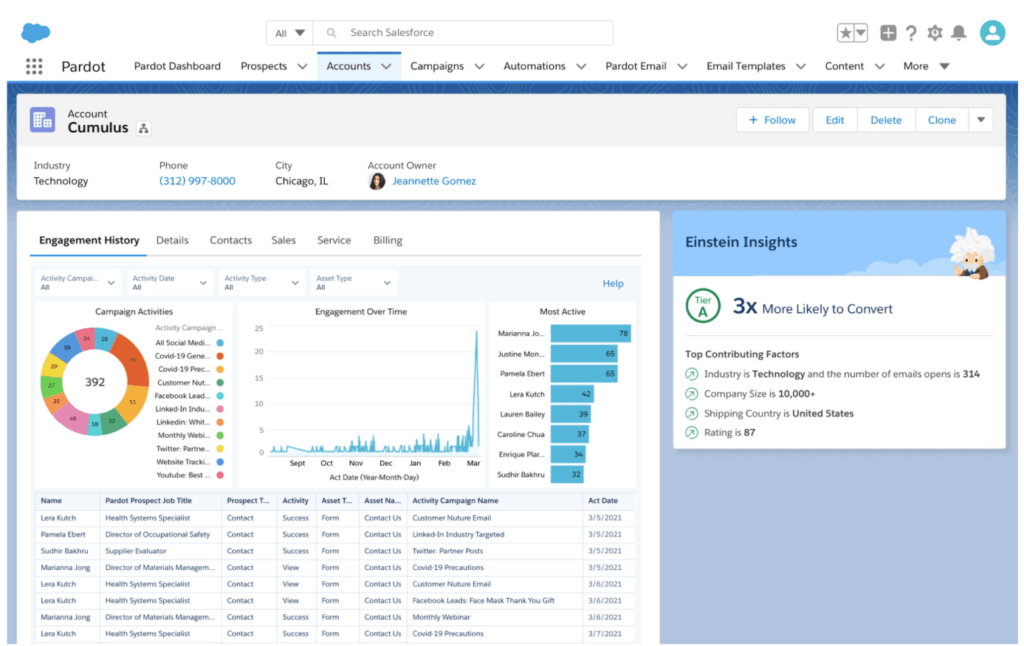
Aida Khadzhibiekova , Salesforce Consultant


